International production and quality assurance standards needed
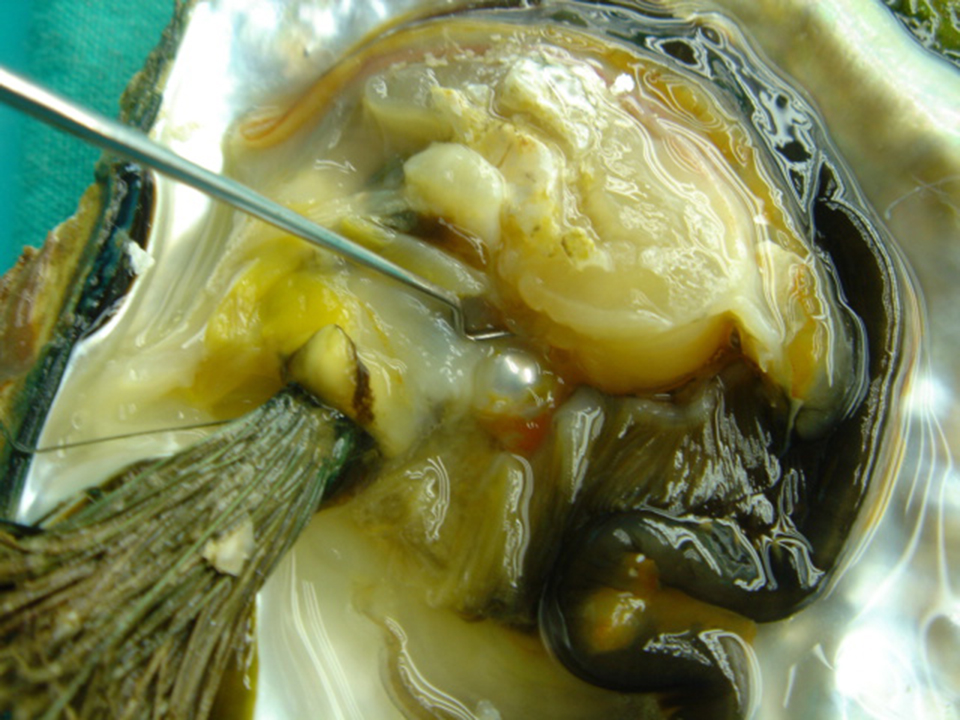
Pearls were once regarded as one of the most precious gems. Paintings of kings, queens, and sultans reveal crowns and robes embroidered with an assortment of pearls, a sign of both royal wealth and power. These pearls were all “natural,” extracted from the one-in-a-thousand oysters which had the misfortune of having a small piece of material lodge near their gonads and then proceeded to cover the intruders with layers of pearly nacre.
From 2000 B.C. and perhaps before, pearls were extremely rare – and extremely valuable. The Romans traded gold for pearls. Queen Elizabeth I had such a passion for pearls that she wore ropes of them to her knees. Among Columbus’ prizes from the New World were bags of pearls for which he bartered along the coast of Venezuela.
To find pearls, you have to find oysters. So for centuries, diving for pearl oysters was both a highly risky and highly rewarding occupation. Entire beds containing millions of oysters were wiped out by men’s greed for this jewel.
Farming jewels
Enter aquaculture at the end of the 19th century, when Kokichi Mikimoto, the son of a noodle shop owner, and his colleagues in Japan discovered ways to implant shell beads or nuclei in oysters to create “cultured” pearls. At first, the world was horrified by the prospect that pearl prices would plunge. But Mikimoto, a master promoter, established cultured pearls as legitimate gems, and both value and production climbed.
Japanese pearls from akoya oysters reigned supreme until the 1960s, when another oyster species – Pinctada margaritifera – was cultured in Tahiti to form large, black pearls. In the 1970s, large white/golden pearls were produced from P. maxima in Australia, Indonesia, the Philippines, and other Southeast Asian countries. Chinese farmers got into the act in 1958, when they built the first pearl-growing farm. They concentrated on freshwater mussels, and instead of bead implants, utilized mantle tissue to grow numerous pearls within the same mollusk.
Price, rarity maintained
The pearl situation entering the 1990s was characterized by high prices and low volume. Like most gems, pearls were still considered rare and expensive. This state of affairs was due to numerous reasons.
The Japanese controlled the bead supply, implant technology, production and market. They selected only the most auspicious sites for farming and allowed only the highest-quality products to be sold.
Chinese production of freshwater pearls was still in the development stage. Pearl farming was based either on the collection of oysters from the wild (Australia) or collection of wild oyster spat (Tahiti).
The “aura” of wearing pearls continued as pearls remained the baubles of royalty and the well-to-do. Tahitian black pearls were in such demand that even shops in Hawaii were hard pressed to offer a single necklace, which most likely could have sold for U.S. $50,000 and up.
Production boom
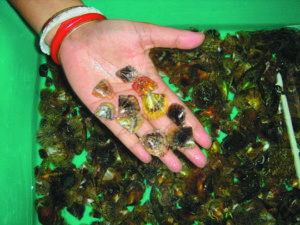
In the mid-1990s, pearls suddenly lost their luster, so to speak. During this period, researchers working with all the major species of pearl-bearing mollusks figured out the technology to produce the animals by the millions. By so doing, they enabled the industry to achieve enormous leaps in production.
In 1991, Chinese freshwater pearl production was estimated at 150 metric tons (MT). By some estimates, this figure had increased to 2,000 MT in 2003. Tahitian pearl production in 1993 was 2 MT. By 2003, that output had climbed to 9.9 MT. Indonesia’s quantity, at 1 MT in 1992, had almost quadrupled to 3.75 MT in 2003.
Advances in hatchery technology enabled investors to establish farms in areas previously considered undesirable because no stock of wild oysters existed. Now, any stretch of water that met the basic requirements could be placed into production. The implications for China and Indonesia – two nations with vast water areas and cheap labor – were enormous.
Unfortunately for the pearl industry, the production boom was not accompanied by an increase in quality controls. In a rush for cash, millions of junk pearls were dumped on the market. Prices took a plunge, and this situation was greeted by farmers with even greater production. This, naturally, led to even lower prices. Within a decade, the “queen of gems” was reduced to a commoner.
Fassler, Production in major pearl-farming nations, Table 1
| Country | Pearl Type | Year | Quantity (mt) | Value (U.S millions) |
|---|---|---|---|---|
| Tahiti | Black | 2003 | 9.9 | $95.4 |
| Japan | Akoya | 2002 | 25 | $130.0 |
| China | Akoya | 2002 | 13 | |
| China | Akoya | 2003 | 9 | |
| China | Freshwater | 2002 | 600 | $80.0 |
| Indonesia | White/golden | 2003 | 3.75 | |
| Australia | White/golden | 2003 | 2.4 | |
| Philippines | White/golden | 2003 | 1.2 | |
| Myanmar | White/golden | 2003 | .15 |
Today’s pearl industry
The production explosion had profound affects on the pearl industry and, indeed, the perception of pearls around the globe.
Like many aquacultured commodities, pearls are now big business. Unless you have a farm with millions of oysters or a “back yard” family-run operation, it’s tough to make a profit. And, of course, you need a large, efficient hatchery.
There’s more variety in pearls than ever before. Unlike 20 years ago, treatments have become routine. These include cleaning, bleaching, polishing, and coloring pearls with dyes. A variety of shapes – crosses, diamonds, hearts, and so forth – are also available.
High productivity and the inability of farmers to work together have caused a drastic drop in pearl prices that has taken the “rarity” out of pearls. You can buy a quality Chinese freshwater necklace with non-nucleated 7-mm round pearls for a few hundred dollars, and Chinese “rice pearl” necklaces are available at flea markets for a few dollars. There has been something of an increase in value this year, but prices remain well off their highs of the pre-1990s.
Continued growth
The Australians have shunned the hatchery for their large white/golden pearls and are sticking by a 550,000 yearly quota on P. maxima from the wild. Indonesia, by contrast, fully utilizes hatcheries in producing at least 2 million oysters a year. And the Philippines and Myanmar are now developing their own industries.
Despite its challenges, pearl farming is spreading to more locations than ever: Mexico, Micronesia, India and even Hawaii, USA. In order for these new farmers to survive and prosper, they must find their market niches and utilize the talents of local jewelers to differentiate their products from others. Filipino farmers, for example, have formed a trade association that is aggressively marketing their pearls as unique and of higher quality than those of their competitors.
Global organization
All is not right with pearls these days, but industry leaders recognize their problems and are eager to find solutions. Rosario Autore, the owner of eight farms in Australia and Indonesia, is calling for an international organization of major producers and wholesalers that would work together to control production and assure quality – an idea first proposed by the author in 1994. This would be an important step in restoring order from chaos and help this most ancient of gems regain its stature in the 21st century.
Note: Much of the information for this article was drawn from reports that appeared in Pearl World, The International Pearling Journal.]
(Editor’s Note: This article was originally published in the October 2004 print edition of the Global Aquaculture Advocate.)
Now that you've reached the end of the article ...
… please consider supporting GSA’s mission to advance responsible seafood practices through education, advocacy and third-party assurances. The Advocate aims to document the evolution of responsible seafood practices and share the expansive knowledge of our vast network of contributors.
By becoming a Global Seafood Alliance member, you’re ensuring that all of the pre-competitive work we do through member benefits, resources and events can continue. Individual membership costs just $50 a year.
Not a GSA member? Join us.
Author
-
Dr. C. Richard Fassler
Hawaii Department of Business, Economic Development, and Tourism
No. 1 Capitol District Building
250 S. Hotel Street
Honolulu, Hawaii 96813 USA[118,111,103,46,105,105,97,119,97,104,46,116,100,101,98,100,64,114,101,108,115,115,97,102,114]
Tagged With
Related Posts
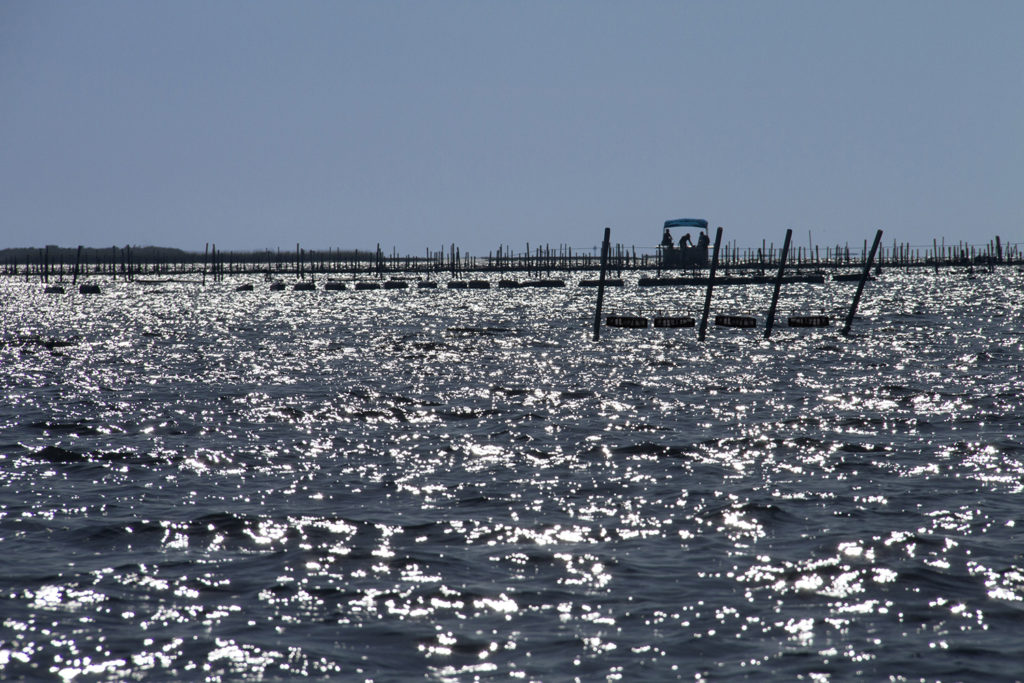
Intelligence
Hatching a plan for Florida oyster farming
Panacea Oyster Co-op and Pensacola Bay Oyster Co. each aim to open dedicated oyster hatcheries in Florida, which could have a significant impact on the state’s aquaculture industry.
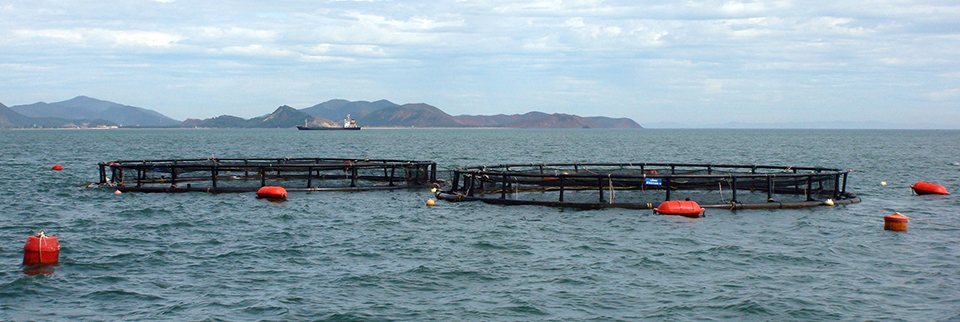
Responsibility
Marine fish farming in Vietnam
While most marine aquaculture in Vietnam has been based on traditional small-scale cage operations in protected locations, the development of larger offshore cage systems could lead to industry expansion.
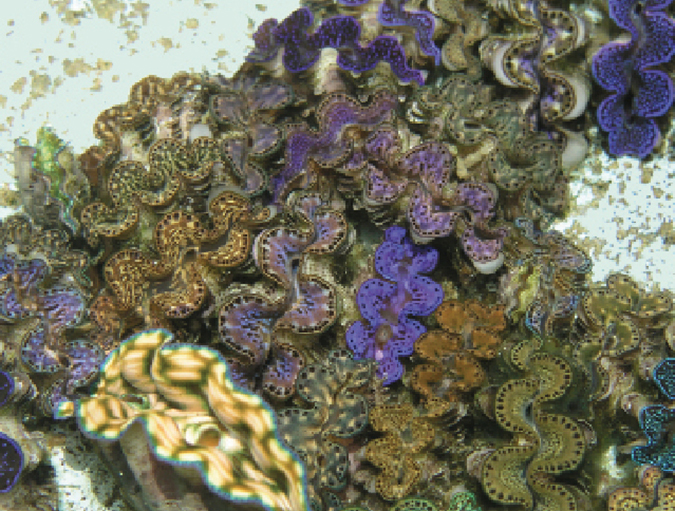
Responsibility
Pacific Islands communities support aquaculture development
Threats from overfishing and climate change highlight the need for alternative methods of local seafood production and economic advancement throughout the Pacific Islands. Ongoing work with giant clams, pearl oysters and crabs helps meet consumer needs and replenish stocks.
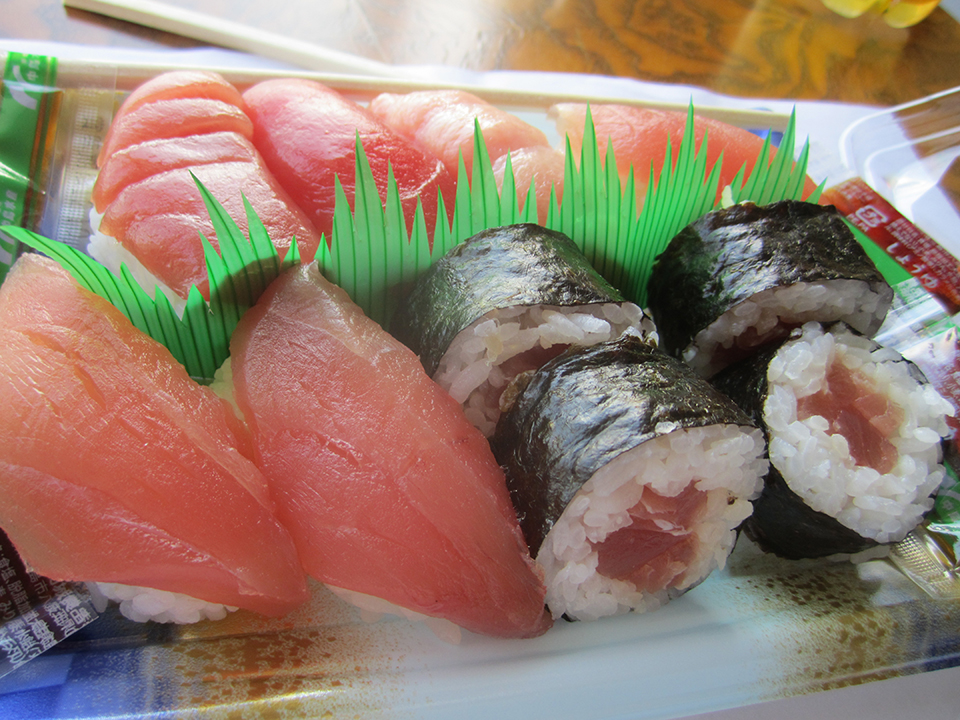
Intelligence
Seafood in Japan
Seafood has played a prominent role in Japan’s food history. The country helped spread sushi, surimi and tempura, and fish consumption by the Japanese is still among the highest in the world. Their taste for seafood also contributes to better health.


